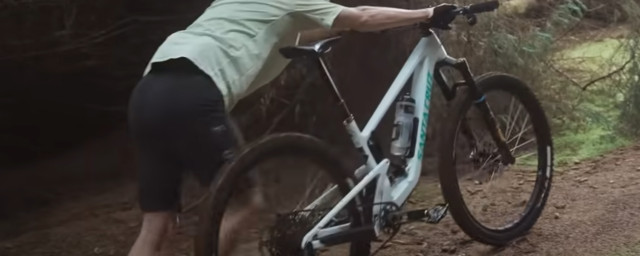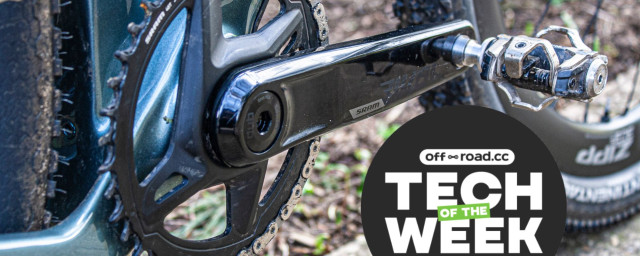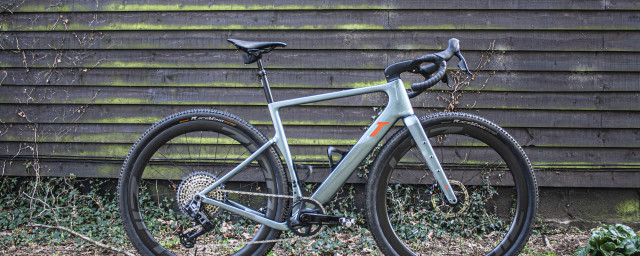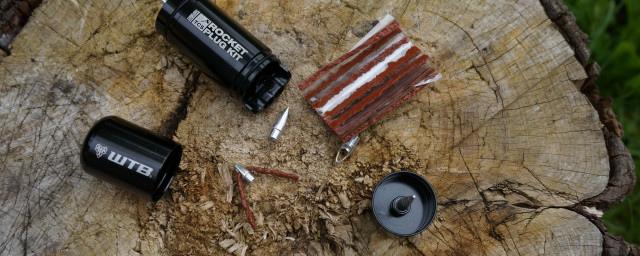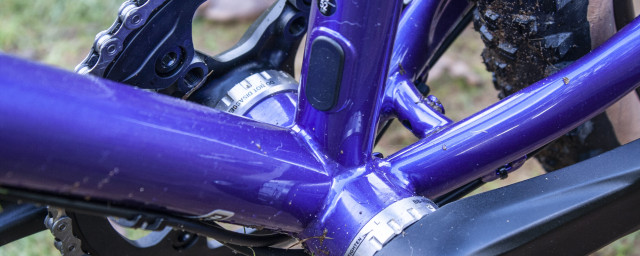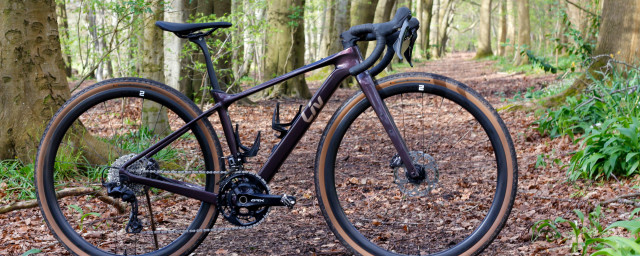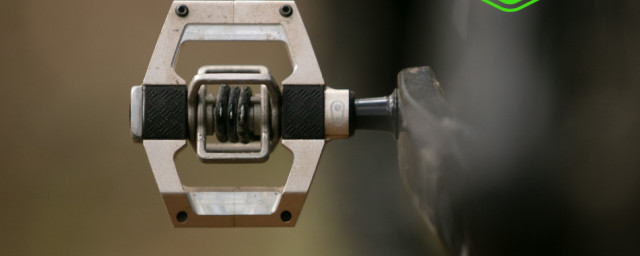The mountain bike stem is arguably the most overlooked component of your bike. Stems are simple components that join your handlebar to the fork steerer and upgrading it has many benefits such as improving stiffness as well as your on-bike position. There's a lot at play within the humble stem, so here are the best models we've tested and some tips on what to look for when the time comes to make the upgrade.
There are two important aspects to look out for when buying a fresh stem and those are clamp diameter and length. The first one is easy. There are two clamp diameters on the market: 31.8mm and 35mm with the former being common on cross-country and trail bikes, while the latter are employed by enduro and downhill bikes.
The reason for the two different clamp diameters is stiffness. The larger the clamp diameter the stiffer the handlebar and the more direct the steering, and that's what a 35mm diameter will achieve. Choosing a 31.8mm diameter will result in a lighter cockpit because the bar and stem use less material, generally, and it's more likely that there will be more compliance present with the narrower diameter.
Stem length dictates how far the handlebar sits from the steering axis with shorter stems bringing the handlebar closer to the steerer tube and longer stems further away. Stem length has a direct impact on where your weight is distributed over the front of the bike. Longer stems place your weight further over the front and shorter stems are more central. A longer stem will help if you're looking for more grip over the front wheel – this setup is often found on cross-country mountain bikes.
Shorter stems help shift weight further back, resulting in faster steering. A stem can also come with a positive or negative rise, which does a similar job as stem length. A taller rise shifts weight back and can compensate for steerer tubes that aren't long enough whereas a negative rise puts more weight over the front – Nino Schurter famously runs a negative rise stem.
Stack height is another aspect that needs attention. A stem's stack describes how much space it'll take up on your steerer tube. The lower the stack, the more space you'll have to move the stem up or down on the steerer whereas taller stack stems reduce this opportunity. The downside of a stem with a short stack is that it'll need to be overbuilt to achieve a similar level of stiffness but there are also a lot of variables that affect strength and stiffness.
Read on to discover our top-rated reviews or scroll to the bottom to read our tips on how to choose the best mountain bike stem.
Best mountain bike stems 2024
- Gusset S2 3mm
- DMR Defy 35+
- Renthal Apex35
- e*thirteen Plus 35
- PNW Components Range Gen 3
- Spank Split 35
- Funn Equalizer
- Pro Koryak Stem
- Nukeproof Horizon
- The best MTB stem
Gusset S2 35mm
£70
Gusset's entry into the stem world is one that's proven rather fruitful with our test team. It weighs in at a very reasonable 166g and comes built with a CNC 7075 aluminium. It's 35mm clamp diameter is 50mm wide and the faceplate uses a zero-gap fixture for fuss-free fitting.
It gets a low 42mm stack so it should offer loads of bar height adjustment and all if its edges have been radiused, so there should be no sharp surfaces in sight. The S2 stem is littered with markings that make dialing in bar roll easy and it looks the part too. On top of that, it's plenty stiff enough for all kinds of enduro shenanigans.
For the full write-up, check out the Gusset S2 35mm stem review.
DMR Defy 35+
£70
Although a little weighty compared to its contemporaries, DMR's Defy 35+ is nothing short of a top performer. It's built using CNC machined 6061 alloy and the limited edition stem (which costs a little more) comes with a very cool camo anodising. It uses a two-piece faceplate paired with a zero-gap top that relies on the lower two bolts for clamping pressure. It's available for both 31.8 and 35mm handlebars.
The real draw of the Defy 35+ is its super low 27mm stack that opens up loads of stem height adjustment. However, it doesn't forgo stiffness. It's immaculately built too and its cool colourway has proven to be hard-wearing throughout its test period. It's available in 35mm and 50mm lengths too.
For more on this stem, read the DMR Defy 35+ stem review.
Renthal Apex35
£117
Renthal is a household name in the world of MTB and its Apex35 stem sets the bar in terms of quality and its low profile but it's not without a steep asking price. However, for that money you'll get a CNC machine aluminum stem that's been cut out of a single solid billet which means that Renthal has managed to shave off all of the excess possible to shave weight. And that effort hasn't gone unnoticed as this stem weighs an impressive 125g. The Apex stem is available in 31.8 and 35mm clamps with the former coming in 31, 40, 50, and 60mm lengths and the latter, 33 up to 60mm.
The obvious quality of Renthal's build goes deeper than aesthetics as the tolerances are super close and the zero-gap two-piece face plate makes for easy installation. Then offering two options of drop or rise, the stem can be fitted upside down.
If you would like to learn more, take a look at the Renthal Apex35 stem review.
e*thirteen Plus 35
£100
e*thirteen's Plus 35 stem is constructed from 7050-T7 alloy and it's been done so to a respectfully high quality with chamfered edges and top-level machining. This stem then uses a unique steerer clamp bolt layout which slims down the stem for knee clearance without sacrificing stiffness. This stem is available in 40 and 50mm lengths.
When riding our tester found this stem to be super strong and easy to install thanks to its clear markings. Steering is responsive and stiffness is plentiful. Its clever steerer bolt layout works well, too, as no knees were knocked.
For more information on a solid stem for harder riding, see our e*thirteen Plus 35 stem review.
PNW Components Range Gen 3
£79
PNW Components' Range Gen 3 stem has a cool trick up its sleeve – its removable action camera mount. This means that riders can easily mount lights and cameras to their stem without relying on extra clamps. It's built from CNC-machined 6061 aluminium and available in 40- or 50mm lengths and 31.8- or 35mm clamps.
This stem is well made and as the stem uses a zero-gap faceplate and marked torque recommendations, fitting is as easy as it gets. And its GoPro mount is easy to remove too if that's not your thing.
For a deeper look at this stem, take a gander at the PNW Components Range Gen 3 stem review.
Spank Split 35
£80
Striking a balance between strength and weight, Spank's Split 35 stem comes in all of the size options and is equipped with handy features. First off, it's made from 6-series aluminium that's been CNC machined, shot peened and anodised. It weighs 143g.
It's available in four lengths from 35 up to 50mm, and its stack is low at 34mm. There's zero rise and its wide cradle is chamfered to eliminate any sharp edges. Living up to its name is the dual faceplate design but handily, there are rubber rings wrapped around the bolts that stop them from falling out of the stem when installed, and they prevent over-tightening.
All the details can be found in our Spank Split 35 stem review.
Funn Equalizer
£67.50
The Funn Equalizer is another stem that can be flipped to achieve 10mm of rise or drop. It's available in 31.8- and 35mm clamp diameters as well as 35-, 42- and 50mm lengths. There's also a great range of colours on offer.
It's forged from 6061 aluminium and then CNC machined to shed a bit of extra weight and its finish is rather impressive. It's built with a slow 34mm stack and there's a 5mm stem spacer in the box, so you won't get caught short when installing your fresh stem.
As with many, the Equaliser uses two face plates to clamp the bars and despite its slow profile, this is one sturdy stem.
To find out more about this product, make sure you read the Funn Equalizer stem review.
Pro Koryak Stem
£60
If it's a low profile and low weight that you're after, the Pro Koryak stem more than fits the bill. It's available in 31.8mm clamp diameter only (zero rise) and comes with 35- to 60mm lengths. It's Di2 compatible, too.
As for construction, it's 3D forged and machine finished and made from 7075 aluminium. It's sorted with plenty of markings for handlebar alignment and while slim, stiffness isn't too bad, although those with an acute sense for flex may notice some present.
Here's the full review of the Pro Koryak stem for more details.
Nukeproof Horizon
£70
Nukeproof's Horizon stem not only looks great but it performs impeccably well, too. At the back, it gets a cool bolt arrangement that offers more thread engagement to minimise the chance of ruining the threads and it's another stem that's been CNC machined for increased knee clearance.
It can be mounted as pictured, or upside down to offer 5mm of rise or drop and its face plate has been designed with a zero gap at the top for a clean look and easy fitting. It's stack height is short at 35mm and during testing, we've found it to be plenty sturdy enough for trail and enduro riding.
For more details and testing notes, make sure you give our Nukeproof Horizon stem review a browse.
The best MTB stem
DMR Defy 35+
Taking home the prize as the best MTB stem is DMR's Defy 35+. It offers everything you need from a stem be it good looks, easy fitting and a reasonable price. It may be a little heavier than its competition but its range of features and top-quality build supersedes the negatives. Its range of options means that there's a Defy for nearly everyone, too.
For all the details behind why it bagged our prestigious 'Top Pick' award, here's everything you need to know about the DMR Defy 35+ stem.
How to choose the best mountain bike stems
As mentioned in the opening paragraphs of this buyer's guide, there are many attributes to consider when upgrading your mountain bike stem: weight, rise, material, length and price. Below, we'll answer all your questions to help you make an informed decision before parting with your hard-earned cash.
Do MTB stems make a difference?
While for the most part, they all do the same thing, a stem upgrade can improve the handling of your bike and that's most noticeable through a stem's measurements. However, stems can also play a role in how stiff your mountain bike's cockpit is. Then there's weight and ease of use. If you're constantly tweaking your stem to load your bike into a car, the easier it is to set up perfectly before you ride, the better.
Are expensive bike stems worth it?
Expensive stems are made using more premium materials and more complicated construction methods and as a result, they're built to a higher quality and often, they're lighter. However, they perform the same job as cheaper stems.
More budget-friendly stems are made using cold forging which is an impact-forming process that compresses a material under extreme force to achieve its shape. Cold forged stems are cheaper but they come with a weight penalty and don't come with many colour choices, if any.
If we up the money and look more towards the mid-range, stems often are still cold forged but they're milled, or 'CNC optimised' after forging to shave off weight and achieve an aesthetic that's not too dissimilar from pricier stems.
High-end stems are CNC machined most often from a block (or multiple blocks) of 6061 aluminium and some brands even take their manufacturing methods even further to increase strength and stiffness. CNCed stems usually look fantastic and are built to the highest quality, but they're also the lightest and can save around 70 grams compared to cold forged stems. Stems made using CNC methods can then be anodised to offer a range of colours.
How do I choose a mountain bike stem?
The best place to start when choosing your next stem is to figure out what your current stem isn't offering. Points to think about are whether it's not long or short enough, or if you want to raise or lower your handlebar further than your fork steerer permits.
As mentioned above, your stem plays a considerable role in how your weight is distributed over the front of your bike. A longer stem will shift your weight forwards and a shorter stem will move it backwards. Different rise stems do a similar thing but without changing the distance of the handlebar from your fork steerer which should keep the steering characteristic similar.
There's then of course the topic of price. If you're willing to spend a little more you'll get a lighter and better-looking stem which is ideal if performance and weight savings are a priority. However, stems that are friendlier on the wallet offer a similar range of features but at the expense of weight.










